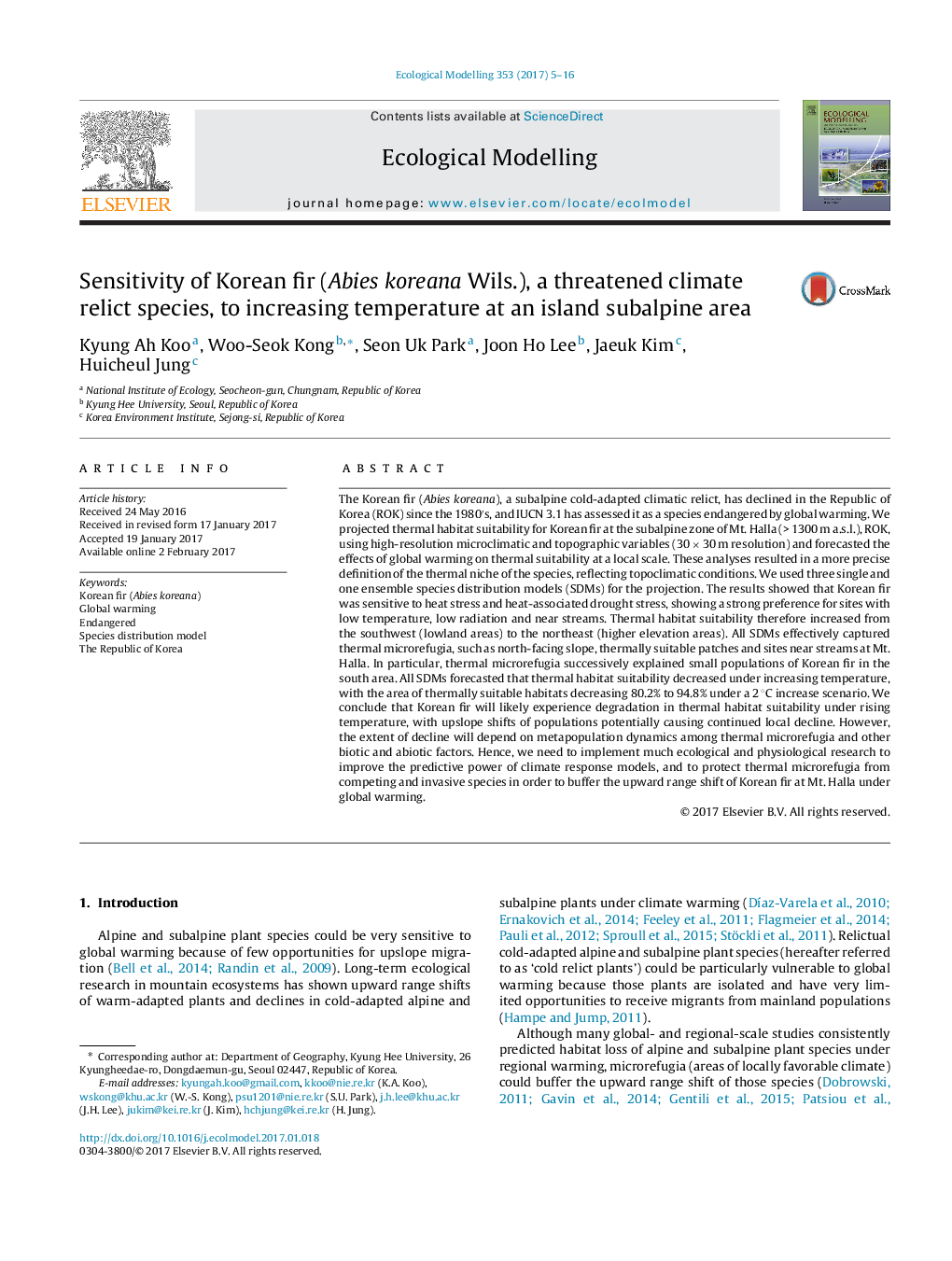| Article ID | Journal | Published Year | Pages | File Type |
|---|---|---|---|---|
| 5742161 | Ecological Modelling | 2017 | 12 Pages |
â¢Korean Fir thermal habitat suitability was projected at the subalpine of Mt. Halla.â¢Fine-scale projections explained a more precise definition of the fir thermal niche.â¢Such projections well captured thermal microrefugia for small fir populations.â¢Korean fir will decline under global warming due to decreases of thermal suitability.â¢But, fir declines depend on metapopulation dynamics among thermal microrefugia.
The Korean fir (Abies koreana), a subalpine cold-adapted climatic relict, has declined in the Republic of Korea (ROK) since the 1980â²s, and IUCN 3.1 has assessed it as a species endangered by global warming. We projected thermal habitat suitability for Korean fir at the subalpine zone of Mt. Halla (> 1300 m a.s.l.), ROK, using high-resolution microclimatic and topographic variables (30 Ã 30 m resolution) and forecasted the effects of global warming on thermal suitability at a local scale. These analyses resulted in a more precise definition of the thermal niche of the species, reflecting topoclimatic conditions. We used three single and one ensemble species distribution models (SDMs) for the projection. The results showed that Korean fir was sensitive to heat stress and heat-associated drought stress, showing a strong preference for sites with low temperature, low radiation and near streams. Thermal habitat suitability therefore increased from the southwest (lowland areas) to the northeast (higher elevation areas). All SDMs effectively captured thermal microrefugia, such as north-facing slope, thermally suitable patches and sites near streams at Mt. Halla. In particular, thermal microrefugia successively explained small populations of Korean fir in the south area. All SDMs forecasted that thermal habitat suitability decreased under increasing temperature, with the area of thermally suitable habitats decreasing 80.2% to 94.8% under a 2 °C increase scenario. We conclude that Korean fir will likely experience degradation in thermal habitat suitability under rising temperature, with upslope shifts of populations potentially causing continued local decline. However, the extent of decline will depend on metapopulation dynamics among thermal microrefugia and other biotic and abiotic factors. Hence, we need to implement much ecological and physiological research to improve the predictive power of climate response models, and to protect thermal microrefugia from competing and invasive species in order to buffer the upward range shift of Korean fir at Mt. Halla under global warming.
